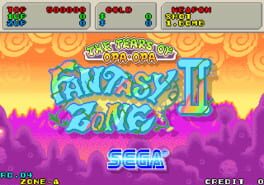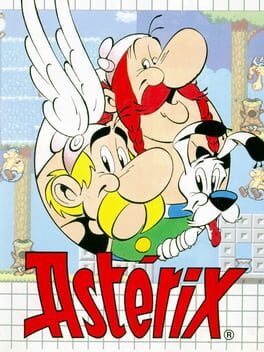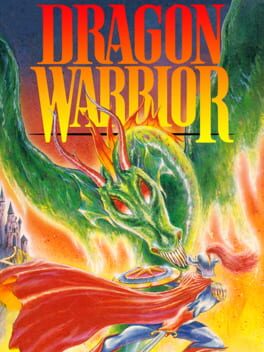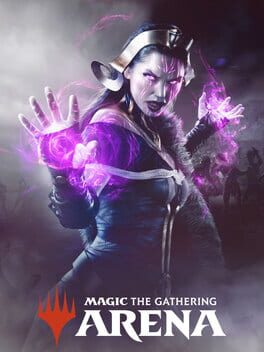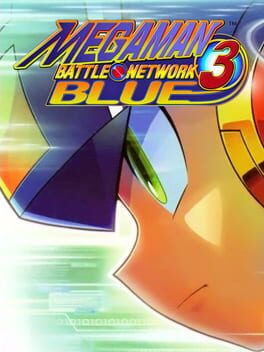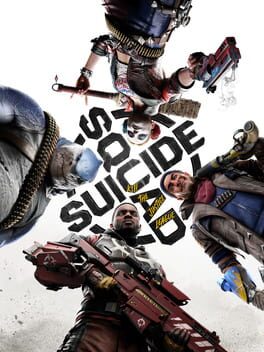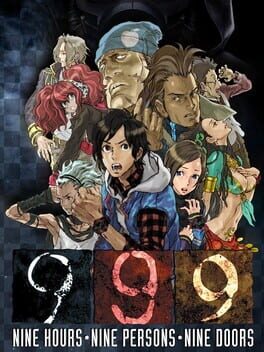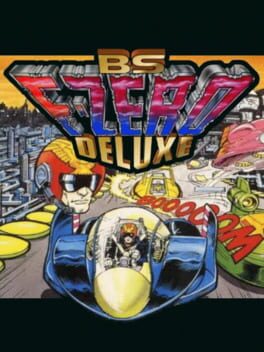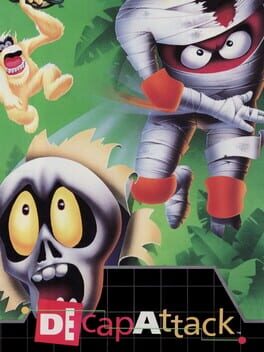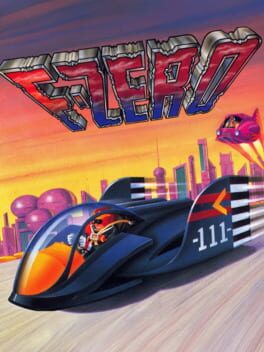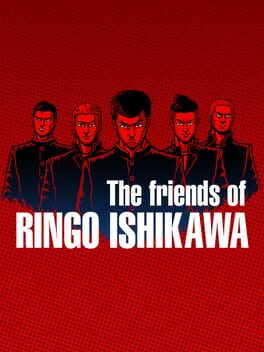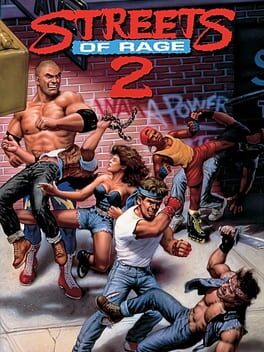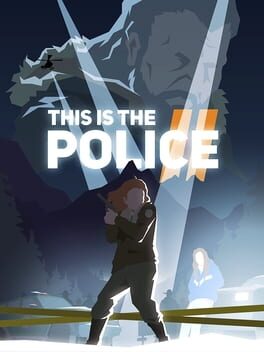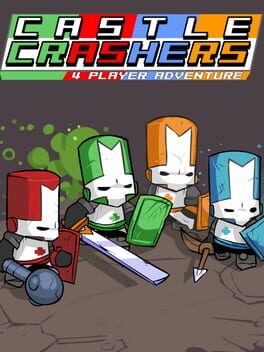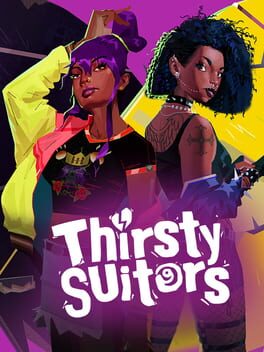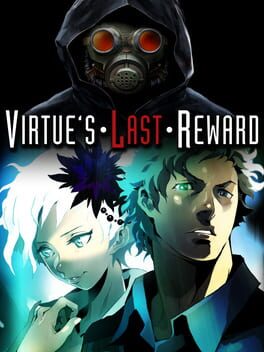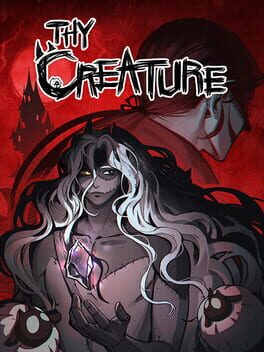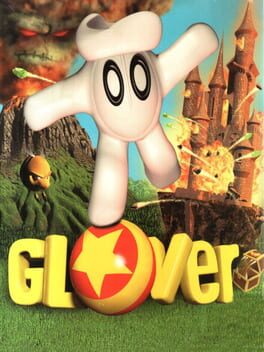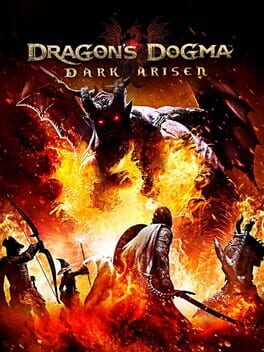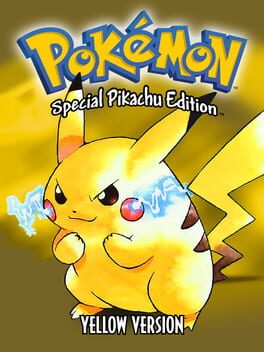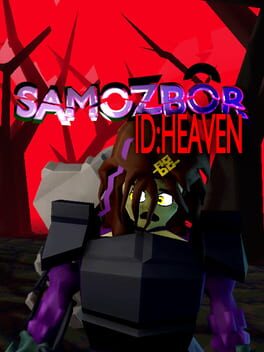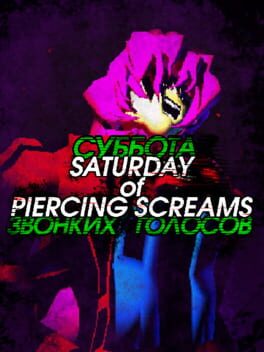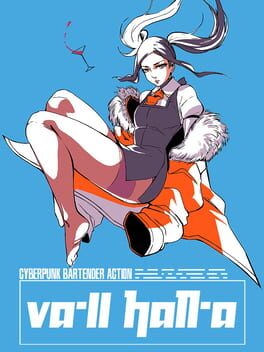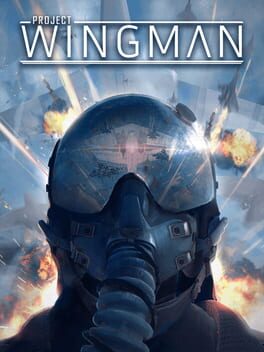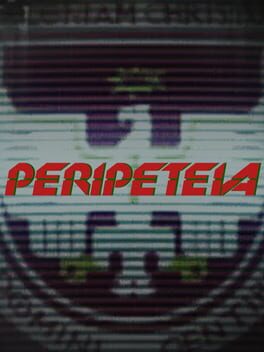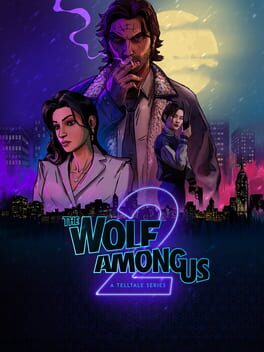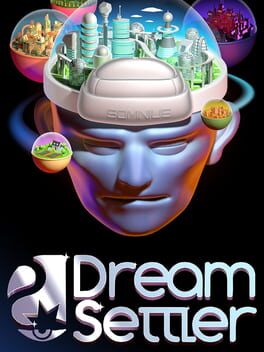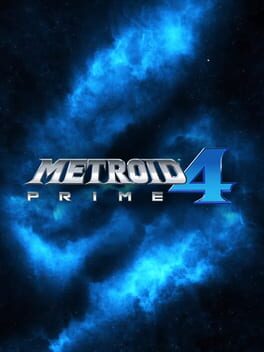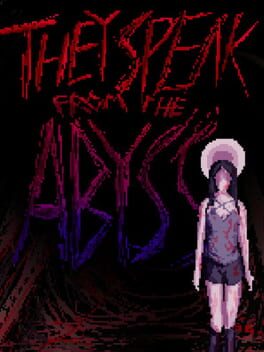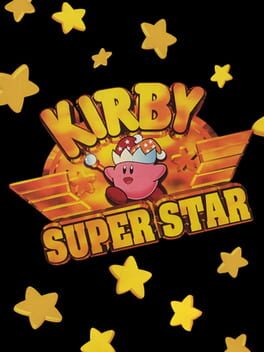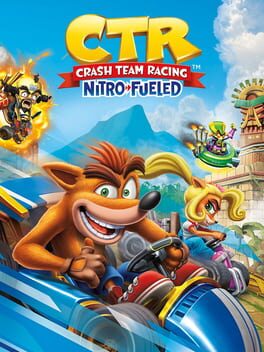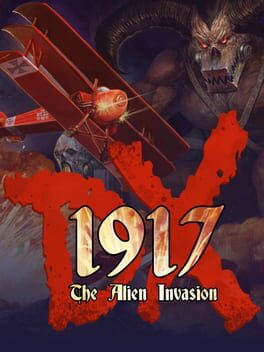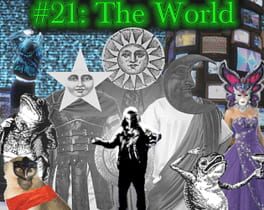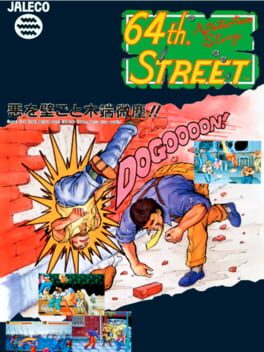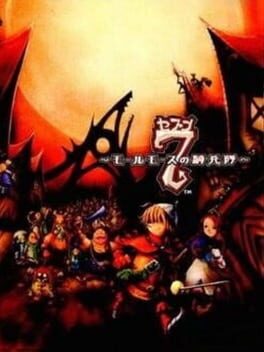SpikeTheStupido
38 reviews liked by SpikeTheStupido
I’m still fairly new to shmups, but one series has really managed to grip me, even this early on: Fantasy Zone. Sega’s main take on the genre has clicked with me a ton for whatever reason, which I think mainly boils down to the unique format and general lack of bullet hell sections, at least until the boss fights. The original’s a fun little time if rough in places, Super Fantasy Zone on the Mega Drive is brilliant, but my favourite in the series (and funnily enough, the only one I’ve managed to complete) is this game right here, the System-16 remake of Fantasy Zone 2! Developed by M2 and first released in their FZ collection on the PS2, I first played it through the 3DS port, and always have a blast whenever I pick it up again for an occasional run. It does so much right and absolutely perfects the formula, so I’m gonna talk about it for a bit!
The original Fantasy Zone 2 was released as a Master System title, and appropriately changed the format to better suit a home console. By comparison, the remake sticks a lot closer to the original game’s formula, but polishes it to near-perfection. For starters, Opa-Opa feels way more fluid to control; he doesn’t skid across the screen anywhere near as much when using the stronger engines, meaning I actually feel incentivized to use them instead of sticking to the Big Wings. There’s also some small additions that go a long way, like being able to take a hit whilst using a weapon at the cost of losing it, that make the game feel a lot more modern and approachable, especially if you suck at shmups like I do.
And to make up for the lack of multiple sections the original FZ2 had, this remake introduces Bright and Dark areas for each stage that have different benefits; Bright is generally easier but you gain less money from defeated bosses and bases, whereas Dark rewards you with more cash for defeated foes, but is a lot harder. I really enjoy how much replay value and strategy this adds, as you can make the game more challenging for yourself, but gain extra rewards in return. It also changes what ending you get, so be sure to keep that in mind (the only thing that changes is the ending cutscene, but there are some features locked behind it in the 3DS release).
But honestly, the thing I really love about Fantasy Zone 2 DX is the presentation. I absolutely adore 16-bit graphics and music, and this is easily one of the best in both those categories! To start with the former, this game looks beautiful! The environments and enemies are all so colourful and vibrant, it really makes the world feel alive. The soundtrack’s incredibly good as well, with each of the main stage songs being super catchy and also surprisingly emotional at points. It makes the events of the game feel fairly dire, which does make sense considering the subtitle’s “The Tears of Opa-Opa”.
So yeah, that’s all I wanted to say; I just replayed this game earlier, and wanted to ramble about it! Fantasy Zone 2 DX is a wonderful entry in an underrated series, and definitely worth a try if you like the previous games or have a 3DS. In fact, it might be my favourite 3DS title period!
I just hope M2 rereleases it on a more accessible platform someday, because more people really need to give this one a go.
The original Fantasy Zone 2 was released as a Master System title, and appropriately changed the format to better suit a home console. By comparison, the remake sticks a lot closer to the original game’s formula, but polishes it to near-perfection. For starters, Opa-Opa feels way more fluid to control; he doesn’t skid across the screen anywhere near as much when using the stronger engines, meaning I actually feel incentivized to use them instead of sticking to the Big Wings. There’s also some small additions that go a long way, like being able to take a hit whilst using a weapon at the cost of losing it, that make the game feel a lot more modern and approachable, especially if you suck at shmups like I do.
And to make up for the lack of multiple sections the original FZ2 had, this remake introduces Bright and Dark areas for each stage that have different benefits; Bright is generally easier but you gain less money from defeated bosses and bases, whereas Dark rewards you with more cash for defeated foes, but is a lot harder. I really enjoy how much replay value and strategy this adds, as you can make the game more challenging for yourself, but gain extra rewards in return. It also changes what ending you get, so be sure to keep that in mind (the only thing that changes is the ending cutscene, but there are some features locked behind it in the 3DS release).
But honestly, the thing I really love about Fantasy Zone 2 DX is the presentation. I absolutely adore 16-bit graphics and music, and this is easily one of the best in both those categories! To start with the former, this game looks beautiful! The environments and enemies are all so colourful and vibrant, it really makes the world feel alive. The soundtrack’s incredibly good as well, with each of the main stage songs being super catchy and also surprisingly emotional at points. It makes the events of the game feel fairly dire, which does make sense considering the subtitle’s “The Tears of Opa-Opa”.
So yeah, that’s all I wanted to say; I just replayed this game earlier, and wanted to ramble about it! Fantasy Zone 2 DX is a wonderful entry in an underrated series, and definitely worth a try if you like the previous games or have a 3DS. In fact, it might be my favourite 3DS title period!
I just hope M2 rereleases it on a more accessible platform someday, because more people really need to give this one a go.
Asterix
1991
[played on original Mega Drive hardware, as Asterix]
Just like everyone who isn’t French, I don’t have much knowledge on Asterix as a franchise. I recognize the two main characters, but that’s really about it. My interest in this game was mostly sparked by a video review from Sega Driven, who spoke very highly of it. Besides, I’m always down to check out more Master System titles, so I thought it’d be worth a playthrough. And despite a few false starts (which were mostly my fault), I can say it was a charming little time!
Asterix might seem like a typical platformer on the surface, but there’s quite a lot that really helps to give it its own identity. First off, there’s two characters you can switch between before each level: Asterix and Obelix. Asterix is shorter and can’t break blocks with his fists, but has access to red explosive potions that’ll do the job for him. Obelix doesn’t need to rely on potions to break blocks, but is a lot bigger and can’t use the regular type at all. This goes a long way to add some replay value, since almost every level has some kind of alternate path that only one of the characters can access, and in some cases, they’re completely redesigned to accommodate their moveset. Both characters also control excellently, with just the right amount of momentum to their movements.
Where Asterix really shines, however, is in the level design. It starts off fairly simple, with the first few worlds being simple left-to-right affairs. But as the game goes on, the stages become bigger and more exploratory, almost feeling like little sandboxes with light puzzle-solving elements. They utilize the characters’ movesets incredibly well (like needing to use Asterix’s potions to create water geysers or break blocks in an auto-scrolling section), and there’s plenty of inventive gimmicks throughout, like special potions that can freeze and ignite enemies. You’re also given plenty of incentives to explore, since there’s lots of bonus rounds, extra lives and bones that’ll unlock a bonus game as Dogmatix. Admittedly, I do wish a few stages explored their gimmicks a bit more, but the level design’s still very solid!
The game’s also great in the presentation department! It looks absolutely gorgeous for a Master System title, with very colourful sprites and backgrounds that capture the style of the original comics well. I also enjoyed the OST, with the song used in most of the castle stages being a particular standout. It can get a bit grating as the tracks tend to loop quickly, but the melodies are still great.
So yeah, that’s Asterix! It definitely has the polish you’d expect from a Sega-developed title, and it’s certainly worth a look if you’re searching for more Master System games to play.
Just like everyone who isn’t French, I don’t have much knowledge on Asterix as a franchise. I recognize the two main characters, but that’s really about it. My interest in this game was mostly sparked by a video review from Sega Driven, who spoke very highly of it. Besides, I’m always down to check out more Master System titles, so I thought it’d be worth a playthrough. And despite a few false starts (which were mostly my fault), I can say it was a charming little time!
Asterix might seem like a typical platformer on the surface, but there’s quite a lot that really helps to give it its own identity. First off, there’s two characters you can switch between before each level: Asterix and Obelix. Asterix is shorter and can’t break blocks with his fists, but has access to red explosive potions that’ll do the job for him. Obelix doesn’t need to rely on potions to break blocks, but is a lot bigger and can’t use the regular type at all. This goes a long way to add some replay value, since almost every level has some kind of alternate path that only one of the characters can access, and in some cases, they’re completely redesigned to accommodate their moveset. Both characters also control excellently, with just the right amount of momentum to their movements.
Where Asterix really shines, however, is in the level design. It starts off fairly simple, with the first few worlds being simple left-to-right affairs. But as the game goes on, the stages become bigger and more exploratory, almost feeling like little sandboxes with light puzzle-solving elements. They utilize the characters’ movesets incredibly well (like needing to use Asterix’s potions to create water geysers or break blocks in an auto-scrolling section), and there’s plenty of inventive gimmicks throughout, like special potions that can freeze and ignite enemies. You’re also given plenty of incentives to explore, since there’s lots of bonus rounds, extra lives and bones that’ll unlock a bonus game as Dogmatix. Admittedly, I do wish a few stages explored their gimmicks a bit more, but the level design’s still very solid!
The game’s also great in the presentation department! It looks absolutely gorgeous for a Master System title, with very colourful sprites and backgrounds that capture the style of the original comics well. I also enjoyed the OST, with the song used in most of the castle stages being a particular standout. It can get a bit grating as the tracks tend to loop quickly, but the melodies are still great.
So yeah, that’s Asterix! It definitely has the polish you’d expect from a Sega-developed title, and it’s certainly worth a look if you’re searching for more Master System games to play.
Dragon Warrior
1986
There's a lot of cool things going for the first iteration of this franchise, as well as a myriad of archaic features most will pan the turn-based RPG genre for as a whole. Excessive amount of random encounters, the literal need to grind up a numbers advantage just to progress, the need to exhaust dialogue from every NPC just to get a vague idea of where you're going.
But outside of the grind mandate, it's not all bad. Most battles are rather quick so increasing your levels doesn't feel too much like a slog. The world is open but not too big meaning you can cover the bulk of it without much hassle of getting lost or not knowing where to go. Every single spell has its usage, and some enemies can be hard countered with very basic game knowledge such as scorpions being easy to farm with Sizz or armor knights having their entire movesets shut down by Fizzle. And while there's an excess amount of dialogue needed to get a general idea of your goal, that works in its strength as you can basically surmise each goal and item location from simply talking to people, and it's nice having a game not be as cryptic as a 90s point-and-click title while also not gripping your hand walking you through the game with no resistance.
As a starting point for the journey, I have no issue recommending it. It's a very short experience that doesn't demand too much of your time to clear. I'd personally recommend either the original NES version, Famicon version or the GBC port of the game. And in the worst case, the game is still first of its kind and predates a ton of tropes and mechanics long before other more popular RPG's came up to bat, and that it really does only improve from here, so to speak.
But outside of the grind mandate, it's not all bad. Most battles are rather quick so increasing your levels doesn't feel too much like a slog. The world is open but not too big meaning you can cover the bulk of it without much hassle of getting lost or not knowing where to go. Every single spell has its usage, and some enemies can be hard countered with very basic game knowledge such as scorpions being easy to farm with Sizz or armor knights having their entire movesets shut down by Fizzle. And while there's an excess amount of dialogue needed to get a general idea of your goal, that works in its strength as you can basically surmise each goal and item location from simply talking to people, and it's nice having a game not be as cryptic as a 90s point-and-click title while also not gripping your hand walking you through the game with no resistance.
As a starting point for the journey, I have no issue recommending it. It's a very short experience that doesn't demand too much of your time to clear. I'd personally recommend either the original NES version, Famicon version or the GBC port of the game. And in the worst case, the game is still first of its kind and predates a ton of tropes and mechanics long before other more popular RPG's came up to bat, and that it really does only improve from here, so to speak.
For a bit of history, Magic the Gathering has always had a string of terrible PC games with poor customization, poor optimization, no match making, very limited format and deck options, terrible monetization, and negative support post-launch, and it's usually a combination of all these issues.
I bring all this up because Arena circumvents nearly all of these problems, and is arguably the best digital CCG that WotC has put out. Of course outside of a few weeks at launch I put off actually putting time into the game, as its release meant the death of their previous live service title, Duels. Unlike Duels though, it seems like Arena is here for the long term. (Hopefully) And unlike at launch, it's a much more packed game.
For comparison, the game launched with just standard. Anyone that knows anything about standard will tell you it's a hellscape. Luckily there are a ton of fairly active game modes available. You have brawl which is basically mini commander, you have alchemy which uses digital only cards as opposed to just the physical equivalents, you have historic which is the game's legacy lite, and a bunch of events, drafts and rotating experimental game modes. There's certainly a lot to do here, and similar to other CCG's like Hearthstone, the cards and board are well crafted and animated. There's a lot more polish here compared to what we were dealt with in the past 2 decades.
Of course it's not all rainbows and sunshine. Despite having the most polish of any MtG title, the PC version is optimized poorly. Even on mid and low settings the game will lag and stutter, something I've never seen with any other card game on my computer. And it's not just isolated issues there, as even on my phone I'll get occasional crashes. Despite me gassing it up, it's not doing anything real technical. You don't have Elspeth or Liliana standing on cardboard with 3D renders. I can only theorize it being a server issue, but it really adds to a mixed experience during long sessions.
And that brings to whats my opinion the main issue; the monetization. And it's real messy. A pack is 1000 gold. You get about 300 gold a day, and about 2k gold a week. That's about 4 packs a week if you're choosing to be f2p, which really isn't good. To compare, Hearthstone you can get a pack a day at worst. That's really not good, and to boot the cash shop has the usual flood of cosmetics, overpriced pack bundles, random (pretty) uncommons sold at some few thousand gold each, it's a mess. The 1 upside is you can obtain wild cards as you open packs, which you can trade in for cards you want, ie a rare wild card let's you get any rare card you want. I would say it's more generous than your average dust system, until you realize you probably need or want 4 of the same rare or mythic in your list to stay competitively, which can really jack costs up.
Now that's not to necessarily say the game is p2w (well in some formats it will be p2w) but say we have climbing the standard ladder as the benchmark, you can make a relatively cheap mono red or mono black deck and climb to mythic (the game's top rank) without too much trouble. Paying is if you want variety in deck building and other game modes, which I imagine is most of the fun for most deck builders.
I mentioned how much gold you could make a day, and yeah that's another issue which creates a real monotonous gameplay loop. Each win nets you 25 gold, sometimes a random uncommon card. You get 15 wins a day for earning gold. Meaning you'll be playing about 15-40 games depending daily. Most of those games will either be with a very linear deck like mono red or mono black, or with a constructed starter deck. You get your dailies done, and that's about it. There's nothing here to keep playing and work towards. You can grind out ladder rank for end of month rewards, and you can gamble and try to go infinite through drafts, but it's not consistent. So for months, this will be MTG Arena, until MAYBE you get a somewhat sizeable card pool.
As such, this makes Arena an incredibly difficult game to recommend for the long term. If you never played Magic then I couldn't recommend this game more solely to introduce you to the franchise, but as far as spending goes? Your money is better spent either on MTG Online or the physical game itself. And if you want to goof around with friends, you have much cheaper alternatives like Tabletop Simulator or Untap.
I bring all this up because Arena circumvents nearly all of these problems, and is arguably the best digital CCG that WotC has put out. Of course outside of a few weeks at launch I put off actually putting time into the game, as its release meant the death of their previous live service title, Duels. Unlike Duels though, it seems like Arena is here for the long term. (Hopefully) And unlike at launch, it's a much more packed game.
For comparison, the game launched with just standard. Anyone that knows anything about standard will tell you it's a hellscape. Luckily there are a ton of fairly active game modes available. You have brawl which is basically mini commander, you have alchemy which uses digital only cards as opposed to just the physical equivalents, you have historic which is the game's legacy lite, and a bunch of events, drafts and rotating experimental game modes. There's certainly a lot to do here, and similar to other CCG's like Hearthstone, the cards and board are well crafted and animated. There's a lot more polish here compared to what we were dealt with in the past 2 decades.
Of course it's not all rainbows and sunshine. Despite having the most polish of any MtG title, the PC version is optimized poorly. Even on mid and low settings the game will lag and stutter, something I've never seen with any other card game on my computer. And it's not just isolated issues there, as even on my phone I'll get occasional crashes. Despite me gassing it up, it's not doing anything real technical. You don't have Elspeth or Liliana standing on cardboard with 3D renders. I can only theorize it being a server issue, but it really adds to a mixed experience during long sessions.
And that brings to whats my opinion the main issue; the monetization. And it's real messy. A pack is 1000 gold. You get about 300 gold a day, and about 2k gold a week. That's about 4 packs a week if you're choosing to be f2p, which really isn't good. To compare, Hearthstone you can get a pack a day at worst. That's really not good, and to boot the cash shop has the usual flood of cosmetics, overpriced pack bundles, random (pretty) uncommons sold at some few thousand gold each, it's a mess. The 1 upside is you can obtain wild cards as you open packs, which you can trade in for cards you want, ie a rare wild card let's you get any rare card you want. I would say it's more generous than your average dust system, until you realize you probably need or want 4 of the same rare or mythic in your list to stay competitively, which can really jack costs up.
Now that's not to necessarily say the game is p2w (well in some formats it will be p2w) but say we have climbing the standard ladder as the benchmark, you can make a relatively cheap mono red or mono black deck and climb to mythic (the game's top rank) without too much trouble. Paying is if you want variety in deck building and other game modes, which I imagine is most of the fun for most deck builders.
I mentioned how much gold you could make a day, and yeah that's another issue which creates a real monotonous gameplay loop. Each win nets you 25 gold, sometimes a random uncommon card. You get 15 wins a day for earning gold. Meaning you'll be playing about 15-40 games depending daily. Most of those games will either be with a very linear deck like mono red or mono black, or with a constructed starter deck. You get your dailies done, and that's about it. There's nothing here to keep playing and work towards. You can grind out ladder rank for end of month rewards, and you can gamble and try to go infinite through drafts, but it's not consistent. So for months, this will be MTG Arena, until MAYBE you get a somewhat sizeable card pool.
As such, this makes Arena an incredibly difficult game to recommend for the long term. If you never played Magic then I couldn't recommend this game more solely to introduce you to the franchise, but as far as spending goes? Your money is better spent either on MTG Online or the physical game itself. And if you want to goof around with friends, you have much cheaper alternatives like Tabletop Simulator or Untap.
I have a strong bias towards the Battle Network franchise, and I'd argue this is one of the best games ever made. It does just about everything I love in these RPG's, with extreme amounts of customization, a rich and colorful world that progresses with you and the plot, a ton of fights and unique bosses that will test every aspect of your deck building prowess, and just an abhorrent amount of content. Compared BN titles before and after this one, there is just so much to keep you distracted, from boss time trials to grinding out different forms and battle chips to side quests and NPC offerings littered in the overworld and net world.
There is a whole lot I want to say about this game, but genuinely I believe it would edge into rambling territory, so I'll cliffnote the important bits and disclaimers to try and make this as good as a sales pitch as I can.
They've vastly improved on every aspect of this game from its predecessors, from even more unique chip interactions, better navi customization that allows you to fine tune both parts of Megaman, for the most part net worlds and the overworld are made so concise that it never grows tiresome to explore either of them, while at the same time never stepping into repetition territory with endless amounts of needless backtracking, a pitfall nearly every other game in the franchise falls into. Style changes, which are basically different forms Megaman can change into, have a lot more power and influence in most combat encounters, are very easy to grind out of if you don't like a particular form, and if you're green to the series, always comes as a nice surprise to what you get and makes the early and mid game so much more enjoyable for it.
So I guess a few precautions for recommendation, as the issues I list aren't issues to me personally, but they can unfortunately work as deterrents. I've mentioned grinding a few times, and the game can be just that. You'll have to have 1 of every single standard chip to see 99% of the game's contents, and it takes 100 battles minimum to change forms. Again, not really an issue for me since that usually just surmounts a video on the second monitor, but it can be grueling if you're new and you're pushing for post-game content for the first time.
There's also the "Blue" in the title. This is the BN game that started the trend of multiple versions, and unfortunately Blue just has better things going for it. A ninja (shadow) style over White's ground style, which while the latter has some really cool applications, shadow style's ability to just avoid damage is just vastly better. Blue comes with a unique boss fight in the form of Punk who, while doesn't drop anything besides money, begs the question why he's only in Blue. And Blue having one of the best chips in the entire franchise with FoldrBak, a free chip you can put into any deck that you can use whenever to reshuffle your hand and deck and draw new hand. Anyone with a basic understanding of card games can understand how absurd this effect is, while White gets a chip that lets you... use the last navi chip you used. So in terms of version exclusives, you're either choosing a free mulligan + draw 7 at any point in a fight, or 50-100 extra damage maybe.
Lastly, if you want to see EVERYTHING this game has to offer, you have to either trade chips with other versions, chips that are exclusive to each game (you cannot trade FoldrBak btw) or modifyyour game file. While this is made easier with the Legacy Collection available on all modern platforms as of writing this review which comes with online connectivity, you're still forced to find another human being to trade with. You aren't missing out on much, just the T4 versions of bosses to fight, but it's still annoying to have this restriction nonetheless.
All that said, Battle Network 3 is still a gem people should absolutely experience. It's an amazing game that still holds up to this day, and it both wasn't and won't be my first and last times playing it. If you want to jump right in there's no harm starting out with this game, but just for plot sake I'd at least recommend playing through the first 2 Battle Network as there are some narrative beats that come out better with context from the first 2, including a fairly major spoiler between Megaman and Lan, the protagonists.
Please play Battle Network 3.
There is a whole lot I want to say about this game, but genuinely I believe it would edge into rambling territory, so I'll cliffnote the important bits and disclaimers to try and make this as good as a sales pitch as I can.
They've vastly improved on every aspect of this game from its predecessors, from even more unique chip interactions, better navi customization that allows you to fine tune both parts of Megaman, for the most part net worlds and the overworld are made so concise that it never grows tiresome to explore either of them, while at the same time never stepping into repetition territory with endless amounts of needless backtracking, a pitfall nearly every other game in the franchise falls into. Style changes, which are basically different forms Megaman can change into, have a lot more power and influence in most combat encounters, are very easy to grind out of if you don't like a particular form, and if you're green to the series, always comes as a nice surprise to what you get and makes the early and mid game so much more enjoyable for it.
So I guess a few precautions for recommendation, as the issues I list aren't issues to me personally, but they can unfortunately work as deterrents. I've mentioned grinding a few times, and the game can be just that. You'll have to have 1 of every single standard chip to see 99% of the game's contents, and it takes 100 battles minimum to change forms. Again, not really an issue for me since that usually just surmounts a video on the second monitor, but it can be grueling if you're new and you're pushing for post-game content for the first time.
There's also the "Blue" in the title. This is the BN game that started the trend of multiple versions, and unfortunately Blue just has better things going for it. A ninja (shadow) style over White's ground style, which while the latter has some really cool applications, shadow style's ability to just avoid damage is just vastly better. Blue comes with a unique boss fight in the form of Punk who, while doesn't drop anything besides money, begs the question why he's only in Blue. And Blue having one of the best chips in the entire franchise with FoldrBak, a free chip you can put into any deck that you can use whenever to reshuffle your hand and deck and draw new hand. Anyone with a basic understanding of card games can understand how absurd this effect is, while White gets a chip that lets you... use the last navi chip you used. So in terms of version exclusives, you're either choosing a free mulligan + draw 7 at any point in a fight, or 50-100 extra damage maybe.
Lastly, if you want to see EVERYTHING this game has to offer, you have to either trade chips with other versions, chips that are exclusive to each game (you cannot trade FoldrBak btw) or modifyyour game file. While this is made easier with the Legacy Collection available on all modern platforms as of writing this review which comes with online connectivity, you're still forced to find another human being to trade with. You aren't missing out on much, just the T4 versions of bosses to fight, but it's still annoying to have this restriction nonetheless.
All that said, Battle Network 3 is still a gem people should absolutely experience. It's an amazing game that still holds up to this day, and it both wasn't and won't be my first and last times playing it. If you want to jump right in there's no harm starting out with this game, but just for plot sake I'd at least recommend playing through the first 2 Battle Network as there are some narrative beats that come out better with context from the first 2, including a fairly major spoiler between Megaman and Lan, the protagonists.
Please play Battle Network 3.
To lead off, the game runs really well, looks really nice, and plays very competently. Gameplay and combat rely heavily on traversal, and with each character having unique movement options, it helps aid that you get a relative unique experience if you decide to hop between characters. It's really enjoyable to play. That's about all I have for positivity though, as this is an incredibly stale game at best, and a terrible, lifeless and, depending on how much you actually care about DC, even insulting experience at worst.
While the gameplay is good, the avenues to supplement it are very poor. Most missions boil down kill enemies travel to next waypoint repeat, and it doesn't help the boss fights are same-y and stale, while mobs are made of paper to your arsenal, meaning build diversity doesn't matter all that much. Loot is tiered like in every other game, but you get unique and legendaries extremely early in. Normally this would be a good thing but what this devolves into is 99% of the gear you obtain will be crap. Most side missions have an addendum such as you can only kill enemies with grenades or shield breaks, making what would be a fun enough time waster when doing basic defend the point or collect the data from enemies, into such a tedious endeavor where you're forced to duck and dodge about waiting for ammunition to restore or cooldowns to come off. Between loot being inconsequential and the missions expunging tedium, most people will probably gravitate to just finishing the story, which doesn't fair well either.
It's "Kill the Justice League" but you would expect some more fanfare from following that path. Legacy heroes are treated like the fodder you'll murder in most of your playtime, and with the direction the story goes the tag line ends up feeling like an afterthought. It also doesn't help that some heroes get special, tasteful send offs while others are left laying there as background corpses, so it throws away the potential hook that the squad is just that disconnected from humanity, because they aren't. Not to say the game doesn't have the occasional charm, and if you've been a fan of the modern retelling of Suicide Squad, you'll find more entertainment here than most. Just know that the beginning is the peak of quality in terms of tension and writing. All on top of this technically being a sequel to Arkham Knight, which is an entire mess of worms you have to let sink in.
And with the hook deflated, that's really about it. Suicide Squad does absolutely nothing to stand out amongst its contemporaries. Open world action loot shooter with cash shop, battle pass and rotating seasons. There's really no reason to play this over the 40 other live service loot games that do the same exact thing. Come back in 3 years when the game's been marked down to $2 and has almost double the content with 0 charge, don't support this beta test.
While the gameplay is good, the avenues to supplement it are very poor. Most missions boil down kill enemies travel to next waypoint repeat, and it doesn't help the boss fights are same-y and stale, while mobs are made of paper to your arsenal, meaning build diversity doesn't matter all that much. Loot is tiered like in every other game, but you get unique and legendaries extremely early in. Normally this would be a good thing but what this devolves into is 99% of the gear you obtain will be crap. Most side missions have an addendum such as you can only kill enemies with grenades or shield breaks, making what would be a fun enough time waster when doing basic defend the point or collect the data from enemies, into such a tedious endeavor where you're forced to duck and dodge about waiting for ammunition to restore or cooldowns to come off. Between loot being inconsequential and the missions expunging tedium, most people will probably gravitate to just finishing the story, which doesn't fair well either.
It's "Kill the Justice League" but you would expect some more fanfare from following that path. Legacy heroes are treated like the fodder you'll murder in most of your playtime, and with the direction the story goes the tag line ends up feeling like an afterthought. It also doesn't help that some heroes get special, tasteful send offs while others are left laying there as background corpses, so it throws away the potential hook that the squad is just that disconnected from humanity, because they aren't. Not to say the game doesn't have the occasional charm, and if you've been a fan of the modern retelling of Suicide Squad, you'll find more entertainment here than most. Just know that the beginning is the peak of quality in terms of tension and writing. All on top of this technically being a sequel to Arkham Knight, which is an entire mess of worms you have to let sink in.
And with the hook deflated, that's really about it. Suicide Squad does absolutely nothing to stand out amongst its contemporaries. Open world action loot shooter with cash shop, battle pass and rotating seasons. There's really no reason to play this over the 40 other live service loot games that do the same exact thing. Come back in 3 years when the game's been marked down to $2 and has almost double the content with 0 charge, don't support this beta test.
Hylics
2015
The cutscene that plays when using the dynamite on a battle is the single best thing ever implemented in any videogame in all of human history and I’m only mildly exaggerating.
A macabre festival where the dance never ends, a fever dream made out of bones and clay; Hylics manages to perfectly capture the feeling of a nightmare that seems to be completely absurd, yet it manages to craft meaning within the spiral of chaos. Places with random names located in islands that make no sense; mazes and entire worlds inside machines down ladders that somehow connect, and half of the odd weirdos you come across seem to speak in riddles and the other half take the insanity of this realm as another Tuesday, but all share the incredibly exaggerated animations, that range from the smoothest hand and clay movement you could think of in battles to just three frames for each walk cycle, and I wouldn’t have it any other way.
If Hylics delivers something in spades, it’s definitively a sense of style, of harsh clay figurines and contrasting colors, of poems and jokes, with mountaintops populated by cone-shaped cultists and an afterlife full of fishes and a couch. I could list every single area and enemy in this game and say, ‘’WoAH! That was pretty weird and cool!’’, but I think the fact the game is just that, an avalanche of nonsense and weird shapes—and somehow finds a way to make an actually pretty simple tale and a world that has some sort of meaning and makes sense—is far more impressive than the weird moments themselves.
The harsh and quiet melodies, the special moves you get by watching the TVs, the pals you meet along the way; it’s really hard to talk about individual aspects of Hylics because everything seems intrinsically connected with each other and totally unique at the same time, which ironically makes it so some of the moments that stand out like a sore thumb are those in which it feels like the game doesn’t go nuts enough with its ideas.
The combat system, as crazy as some of the attacks get, is still pretty light; there are some cool things about it, like how it connects to the afterlife, some item interactions, and how the game’s own openness makes meeting allies and gaining abilities completely up to you. But I think that’s where the interest peaks, in how the combat is pretty determined by what you do outside of it, and when it comes to battles themselves, while there are some interesting bosses, it soon became pretty clear others are just damage sponges and that you can become pretty powerful very easily, and that plus how the areas are designed often makes combat seem more like a chore you sometimes do to get past a certain point or gain meat and money, and that otherwise evading conflict is often the faster, less annoying option.
And again, it’s in these battles where some of the more abstract and impressive animations can be found, and if anything, the final area and boss fight will ask of you to have gotten many special secret moves and quite the amount of bucks, so it isn’t completely valueless to engage in combat, but in a game with such a crazy atmosphere and universe, I was hoping for something far more engaging.
I was hoping to see more of the party members, who seem to lose their mouths the moment they join you. I was hoping for some of the puzzles to be more out there. I was hoping for more of its insane style to slip into other areas, like the menus or the secrets… Hylics presents an impossibly creative world, and even if it doesn’t last longer than it needs to and it's full of amazing stuff, it feels as if its full potential has yet to be achieved.
But what was accomplished is unforgettable; despite wishing I got to see more of their personalities, the yellow devil and his three friends singing and playing in a bar in the middle of nowhere and plowing through the forces of the moon before facing the final fiend are some amazing moments that made me laugh despite no words being said. Wade is a menace, but not one that has to be locked up; in fact, it should be let out even more wild. Godspeed, you crazy bastard…
Also, big fan of Somsnosa, it’s always nice to see another hat with horns appreciator…
A macabre festival where the dance never ends, a fever dream made out of bones and clay; Hylics manages to perfectly capture the feeling of a nightmare that seems to be completely absurd, yet it manages to craft meaning within the spiral of chaos. Places with random names located in islands that make no sense; mazes and entire worlds inside machines down ladders that somehow connect, and half of the odd weirdos you come across seem to speak in riddles and the other half take the insanity of this realm as another Tuesday, but all share the incredibly exaggerated animations, that range from the smoothest hand and clay movement you could think of in battles to just three frames for each walk cycle, and I wouldn’t have it any other way.
If Hylics delivers something in spades, it’s definitively a sense of style, of harsh clay figurines and contrasting colors, of poems and jokes, with mountaintops populated by cone-shaped cultists and an afterlife full of fishes and a couch. I could list every single area and enemy in this game and say, ‘’WoAH! That was pretty weird and cool!’’, but I think the fact the game is just that, an avalanche of nonsense and weird shapes—and somehow finds a way to make an actually pretty simple tale and a world that has some sort of meaning and makes sense—is far more impressive than the weird moments themselves.
The harsh and quiet melodies, the special moves you get by watching the TVs, the pals you meet along the way; it’s really hard to talk about individual aspects of Hylics because everything seems intrinsically connected with each other and totally unique at the same time, which ironically makes it so some of the moments that stand out like a sore thumb are those in which it feels like the game doesn’t go nuts enough with its ideas.
The combat system, as crazy as some of the attacks get, is still pretty light; there are some cool things about it, like how it connects to the afterlife, some item interactions, and how the game’s own openness makes meeting allies and gaining abilities completely up to you. But I think that’s where the interest peaks, in how the combat is pretty determined by what you do outside of it, and when it comes to battles themselves, while there are some interesting bosses, it soon became pretty clear others are just damage sponges and that you can become pretty powerful very easily, and that plus how the areas are designed often makes combat seem more like a chore you sometimes do to get past a certain point or gain meat and money, and that otherwise evading conflict is often the faster, less annoying option.
And again, it’s in these battles where some of the more abstract and impressive animations can be found, and if anything, the final area and boss fight will ask of you to have gotten many special secret moves and quite the amount of bucks, so it isn’t completely valueless to engage in combat, but in a game with such a crazy atmosphere and universe, I was hoping for something far more engaging.
I was hoping to see more of the party members, who seem to lose their mouths the moment they join you. I was hoping for some of the puzzles to be more out there. I was hoping for more of its insane style to slip into other areas, like the menus or the secrets… Hylics presents an impossibly creative world, and even if it doesn’t last longer than it needs to and it's full of amazing stuff, it feels as if its full potential has yet to be achieved.
But what was accomplished is unforgettable; despite wishing I got to see more of their personalities, the yellow devil and his three friends singing and playing in a bar in the middle of nowhere and plowing through the forces of the moon before facing the final fiend are some amazing moments that made me laugh despite no words being said. Wade is a menace, but not one that has to be locked up; in fact, it should be let out even more wild. Godspeed, you crazy bastard…
Also, big fan of Somsnosa, it’s always nice to see another hat with horns appreciator…
Signalis
2022
It's like everything was taken apart and put back together by something that didn't understand how it worked.
What a trite observation it's become to look at a piece of horror and say it's a story about love.
Signalis is a story about love.
What's here is deceptively deep. Loss and grief is rot, unfinished business is cancer. Those who can let go melt away into sludge; those who cannot are mutated and made to betray themselves. These themes curl through every facet of the game as the tendrils of the flesh heaps dotting the darkened corridors. Enemies you face embody the concept of clinging on in spite of everything around them — nothing in this place stays dead unless it's burnt to ash. Every corrupted Replika has been twisted into an ironic monster: the empathic Kolibri see their synthetic brains bulging from their skulls, spiraling themselves and the units around them into negative feedback loops; the gentle Mynah morph from explicitly not-for-combat mining units into hulking, bleeding, laser-wielding tanks; the socialite Eule are damned as cannon fodder beneath the banner of a fascist army in life and in death. Nobody can escape the inevitable end of their lives, but death here offers no escape. They will die. They will get back up. You will die, and you will do the same. Nothing in this place stays dead.
I have an immense appreciation for how willing the game is to overload your senses. Never has a photo-sensitivity warning been more needed; mechanical pounding and shrieking and groaning litter the soundscape, sharp and harsh, piercing your ears and rumbling your skull. Text and images flash by faster than they can be processed, leaving you with nothing but fragments to be pieced together. Pulsating, ever-growing meat contrasts against sterile, blocky CRT monitors and security cameras. The low-fidelity visual aesthetic of the gameplay doesn't gel flawlessly with the anime-esque cutscenes, but it's unique, and that's enough for me. There's been a bit of a resurgence among indie developers (especially in the horror space) of flocking to low-poly "PS1" styles en masse, and I think it's a good trend. Eight full years of development on Signalis have led to what's probably going to be to the retro PlayStation style what Wind Waker or Jet Set Radio were to cel shading. This will be the one to beat.
Combat is pretty simple, and mostly easy to avoid entirely. I finished the game with dozens of healing sprays, thermite charges, and ammo boxes still overflowing from my item storage. The hard six-item limit definitely feels too restrictive, and a more lenient inventory cap would have allowed for a bit more freedom of experimentation and less backtracking. As stated above, the fact that nothing dies unless you burn it can make the act of backtracking tense, but it's also a bit too effortless to carve a guaranteed enemy-free path towards the safe room once you know where it actually is. The Replikas don't follow you between rooms, and it's incredibly easy to just panic sprint from one door to another past them; Replikas won't spawn into cleared-out areas, nor will they wander through them, and this leads to a lot of rooms feeling static. There's probably a reason for this. There are hallways later in the game that are so tight that you can't feasibly get through them without gunning down the Replikas in your way, so the fact that combat is so easily ignored in earlier areas has to be intended. It's not a bad choice, but it's odd. Still, this is the kind of game that's begging to be broken wide open and speedran.
The game's influences are the most obvious thing about it, and are conversely the least interesting to discuss. Yes, the music is like Silent Hill. Yes, it has Resident Evil inventory management. Yes, it kind of looks like Metal Gear Solid. Yes, there are shots from End of Evangelion in it. These things are evident, and they're boring to talk about, because Signalis stands shoulder to shoulder and hand in hand with the pieces that inspire it. Where the game starts to lose me is in how clunkily it tries to incorporate some of these outside parallels directly into the universe of Signalis: Creative Commons photos of Böcklin's Isle of the Dead flash across the screen at several points of the story. The flags and propaganda posters are all rooted in the aesthetics of the GDR down to the colors and emblem of the flag, and the Rotfrontkämpferbund provide the namesake of a both a planet and a playable zone. The King in Yellow pops up several times, with Elster stating that the book physically "calls to [her]". H.P. Lovecraft makes it into the credits, as does Ambrose Bierce. These incorporations are sloppy. For a game that seems to pride itself on being cryptic (with a moment at the halfway point that will probably result in a lot of prematurely-ended playthroughs), all of these inclusions feel as if they were appended into this world after the fact. They stick out at unnatural angles. The moments where the game lets our history seep into its own feel awkward and lacking in substance against a narrative that can be genuinely alien, challenging, and ambiguous.
For all of my griping, though, this game is an achievement on the part of the two core members of rose-engine. It's easy to weaponize that — "don't complain, it was only a two-person dev team, it's their first try at a major release" — but you don't need to do that to defend Signalis. It stands on its own without needing the excuse. I want more games like this. Not ones that play like Signalis, but ones that are made like it. I want more producers to dump enough funding into the laps of creatives that they can pour a decade of their lives into making something they care about without needing to worry about the money running out. I want more developers to take the risks they want to take and have the freedom to make unorthodox choices. These are entirely uncontroversial statements, but this is a game that I want to see succeed. I want lessons to be taken from this, because there's a lot to be learned from. Signalis is excellent and flawed, beautiful and grotesque, and it deserves whatever moments in the spotlight that it can get. I'm very glad to see it finding an audience.
What a trite observation it's become to look at a piece of horror and say it's a story about love.
Signalis is a story about love.
What's here is deceptively deep. Loss and grief is rot, unfinished business is cancer. Those who can let go melt away into sludge; those who cannot are mutated and made to betray themselves. These themes curl through every facet of the game as the tendrils of the flesh heaps dotting the darkened corridors. Enemies you face embody the concept of clinging on in spite of everything around them — nothing in this place stays dead unless it's burnt to ash. Every corrupted Replika has been twisted into an ironic monster: the empathic Kolibri see their synthetic brains bulging from their skulls, spiraling themselves and the units around them into negative feedback loops; the gentle Mynah morph from explicitly not-for-combat mining units into hulking, bleeding, laser-wielding tanks; the socialite Eule are damned as cannon fodder beneath the banner of a fascist army in life and in death. Nobody can escape the inevitable end of their lives, but death here offers no escape. They will die. They will get back up. You will die, and you will do the same. Nothing in this place stays dead.
I have an immense appreciation for how willing the game is to overload your senses. Never has a photo-sensitivity warning been more needed; mechanical pounding and shrieking and groaning litter the soundscape, sharp and harsh, piercing your ears and rumbling your skull. Text and images flash by faster than they can be processed, leaving you with nothing but fragments to be pieced together. Pulsating, ever-growing meat contrasts against sterile, blocky CRT monitors and security cameras. The low-fidelity visual aesthetic of the gameplay doesn't gel flawlessly with the anime-esque cutscenes, but it's unique, and that's enough for me. There's been a bit of a resurgence among indie developers (especially in the horror space) of flocking to low-poly "PS1" styles en masse, and I think it's a good trend. Eight full years of development on Signalis have led to what's probably going to be to the retro PlayStation style what Wind Waker or Jet Set Radio were to cel shading. This will be the one to beat.
Combat is pretty simple, and mostly easy to avoid entirely. I finished the game with dozens of healing sprays, thermite charges, and ammo boxes still overflowing from my item storage. The hard six-item limit definitely feels too restrictive, and a more lenient inventory cap would have allowed for a bit more freedom of experimentation and less backtracking. As stated above, the fact that nothing dies unless you burn it can make the act of backtracking tense, but it's also a bit too effortless to carve a guaranteed enemy-free path towards the safe room once you know where it actually is. The Replikas don't follow you between rooms, and it's incredibly easy to just panic sprint from one door to another past them; Replikas won't spawn into cleared-out areas, nor will they wander through them, and this leads to a lot of rooms feeling static. There's probably a reason for this. There are hallways later in the game that are so tight that you can't feasibly get through them without gunning down the Replikas in your way, so the fact that combat is so easily ignored in earlier areas has to be intended. It's not a bad choice, but it's odd. Still, this is the kind of game that's begging to be broken wide open and speedran.
The game's influences are the most obvious thing about it, and are conversely the least interesting to discuss. Yes, the music is like Silent Hill. Yes, it has Resident Evil inventory management. Yes, it kind of looks like Metal Gear Solid. Yes, there are shots from End of Evangelion in it. These things are evident, and they're boring to talk about, because Signalis stands shoulder to shoulder and hand in hand with the pieces that inspire it. Where the game starts to lose me is in how clunkily it tries to incorporate some of these outside parallels directly into the universe of Signalis: Creative Commons photos of Böcklin's Isle of the Dead flash across the screen at several points of the story. The flags and propaganda posters are all rooted in the aesthetics of the GDR down to the colors and emblem of the flag, and the Rotfrontkämpferbund provide the namesake of a both a planet and a playable zone. The King in Yellow pops up several times, with Elster stating that the book physically "calls to [her]". H.P. Lovecraft makes it into the credits, as does Ambrose Bierce. These incorporations are sloppy. For a game that seems to pride itself on being cryptic (with a moment at the halfway point that will probably result in a lot of prematurely-ended playthroughs), all of these inclusions feel as if they were appended into this world after the fact. They stick out at unnatural angles. The moments where the game lets our history seep into its own feel awkward and lacking in substance against a narrative that can be genuinely alien, challenging, and ambiguous.
For all of my griping, though, this game is an achievement on the part of the two core members of rose-engine. It's easy to weaponize that — "don't complain, it was only a two-person dev team, it's their first try at a major release" — but you don't need to do that to defend Signalis. It stands on its own without needing the excuse. I want more games like this. Not ones that play like Signalis, but ones that are made like it. I want more producers to dump enough funding into the laps of creatives that they can pour a decade of their lives into making something they care about without needing to worry about the money running out. I want more developers to take the risks they want to take and have the freedom to make unorthodox choices. These are entirely uncontroversial statements, but this is a game that I want to see succeed. I want lessons to be taken from this, because there's a lot to be learned from. Signalis is excellent and flawed, beautiful and grotesque, and it deserves whatever moments in the spotlight that it can get. I'm very glad to see it finding an audience.
I've become convinced that there is no way to substantially improve this game, and/or its story, without drastically altering the final product and its core identity for the worse. If Spike Chunsoft's Danganronpa series is an exploration of character relationships dynamics at its most hyperbolic and brash, Nine Hours, Nine Persons, Nine Doors explores those same dynamics with the tact of a carefully crafted pressurized chamber. There are so many moments within each stroke and line that are created with the sole intent of increasing the dread between two characters, whether by sowing discord or pulling them together amidst almost certain death. The tension isn't overbearing at first but it builds and towers into this monolith of anxiety, to the point where its true finale brought me to tears on my first playthrough.
That's not to discount the gameplay, which is in effect perfected (for the most part) in the PC port but is just as gripping and fun in the original DS version. It's the type of escape room puzzling that I absolutely adore, fully realized and made even more gripping with the eclectic ways you craft solutions. Combining objects, altered arithmetic, careful dialogue traversal, it's all so wild and fresh as someone who plays around with this genre as a matter of habit, let alone taste—it makes me wonder just how much more developed this idea of room traversal and additive puzzle-solving can get if this game is the best I've seen the genre offer. It's such a shot of euphoria peeking through each individual notch in this labyrinth of rooms, putting together pieces and creating more puzzles. It's this type of design that makes me swoon and weep for more of its kind, even as the escape room genre wanes in its popularity little by little every year. This is the type of puzzle game I fucking adore, concentrated and purified to such an extent that replaying it was an immediate rush of dopamine and anxiety.
That's not to discount the gameplay, which is in effect perfected (for the most part) in the PC port but is just as gripping and fun in the original DS version. It's the type of escape room puzzling that I absolutely adore, fully realized and made even more gripping with the eclectic ways you craft solutions. Combining objects, altered arithmetic, careful dialogue traversal, it's all so wild and fresh as someone who plays around with this genre as a matter of habit, let alone taste—it makes me wonder just how much more developed this idea of room traversal and additive puzzle-solving can get if this game is the best I've seen the genre offer. It's such a shot of euphoria peeking through each individual notch in this labyrinth of rooms, putting together pieces and creating more puzzles. It's this type of design that makes me swoon and weep for more of its kind, even as the escape room genre wanes in its popularity little by little every year. This is the type of puzzle game I fucking adore, concentrated and purified to such an extent that replaying it was an immediate rush of dopamine and anxiety.
Persona 3 Reload
2024
Have so much to say but I can't write much. Have so much to express but I can't find the words. Have so much to elaborate but I don't have the energy. Have so much to expound but I can't be able to convey them.
I became conscious of death when my grandmother had passed, but it wasn't until my grandfather went away a few years after I fully became inundated as to what it meant. I can't think of many people as integral to my well being and personality as they were. I cannot recall a time where I wasn't thinking about that stark, orange colored block of a hospital room where the latter had laid, unknowing it would be the last I would ever see of him. I cannot recall a time where death wasn't something I had feared, an abstraction lay unto forces beyond my control, surrounding me so sickly as I continue to grow older. I was lost during my twilight years in high school where I was slowly accustoming into what adulthood would become like. Even now, it haunts me.
"...I finally began to understand...what it means to live... Thinking for yourself... Not running away... Accepting the inevitable... All things eventually come to an end... Every living thing will one day disappear... Only by accepting this can one discover what they truly want... What the meaning of their life will be..."
I wouldn't say Persona 3 was an answer I needed to these fears, but it helped a lot. It was the first game I had ever purchased second handed, and I remembered just the bare minimum when going into it after seeing an LP. A lot of people postured it as a game exploring death, but it's more about the examinations of life as we know it. Death is constant, but it isn't the weight. Turmoil is abundant, but it shouldn't be the reason for demise. Jealousy and apathy are thorns, which is why compassion and hope for tomorrow need to be accentuated now more than ever. Your actions to the other, no matter how insignificant it may be, can blossom and (re-)kindle something into the heart that they may have forgotten. You are your own person, even as you masquerade various personas in multiple conversations and meetups. You are the pillar and support for people, even if you never realize it.
"I decided that I would continue to protect you. I want to be your strength. I know I'm not the only one who can do this... but that's okay... My life will be worth living if it's for this reason... Thank you..."'
Both FES and Reload's combat mechanics are great to me. Though the AI tactic configuration is but a mere husk of its former design principle, stripped to bareness in each subsequent entry as any nuances and underlying appeal have since dissipated, leaving behind a set of reductions and glaring blemishes that, cumulatively, makes the initial appearance seem worse than it actually was - of which someone’s already making sure to right this wrong, I garnered some enjoyment from it regardless. Theurgy wasn't as intrusive as I had thought it was, instead an extension of person's psyche as well as the idea that the power we wield can be used to secure a better tomorrow. It’s been mocked as “cope” to say the old approach was an intentional decision behind the gameplay, but well, a collective interview between various Double Jump board users and Atlus when 4 was coming out has shown that’s just the truth indeed, and I find merit in how that form factor escalates into the feeling of a group coming together and bonding further and further into becoming a simple family. The relationship between Tartarus Guardians and Full Moon Shadows are intrinsically tied, but now reversed - you are no longer gauging the Dark Arcanas as a check for the Guardians' enforcement atop the higher floors, but are instead compartmentalizing the Guardians in an effort to combat the ephemeral being that can't and won't understand you. It's good. It's cyclical. It's the reverse of the cards we all face at some point.
"You don't have to save the world to find meaning in life... Sometimes all you need is something simple, like someone to take care of. I'll keep on living no matter what , so that I can protect you..."
I don't think this is entirely perfect. I actually much prefer the old Tartarus structure since this one is made much more convenient, and I don't agree with the false notion that the party system was archaic even if I understand not everyone will like it regardless. The presentation has some nice flourishes but, especially in the animation department, there are placements and alterations made that took me away from the intended effect. I also find it incredibly suspect that The Answer has been announced of a faux "expansion pass" relatively sooner than expected with two other "pre order bonus" ass costume DLCs preceding it, all without word on FeMC. At the end of it all, I still find FES to be the experience I'd attain whenever I want to revisit this world. Yet, I am content. It's one of very few things in fiction that has brought me to tears. It was wonderful to revisit this story (twice, even, since I replayed FES beforehand). If it means more people can experience this masterpiece, then so be it. Just another face for the fool to don as it shows itself onto the public.
"You can close your eyes. I'll always remain here by your side."
I became conscious of death when my grandmother had passed, but it wasn't until my grandfather went away a few years after I fully became inundated as to what it meant. I can't think of many people as integral to my well being and personality as they were. I cannot recall a time where I wasn't thinking about that stark, orange colored block of a hospital room where the latter had laid, unknowing it would be the last I would ever see of him. I cannot recall a time where death wasn't something I had feared, an abstraction lay unto forces beyond my control, surrounding me so sickly as I continue to grow older. I was lost during my twilight years in high school where I was slowly accustoming into what adulthood would become like. Even now, it haunts me.
"...I finally began to understand...what it means to live... Thinking for yourself... Not running away... Accepting the inevitable... All things eventually come to an end... Every living thing will one day disappear... Only by accepting this can one discover what they truly want... What the meaning of their life will be..."
I wouldn't say Persona 3 was an answer I needed to these fears, but it helped a lot. It was the first game I had ever purchased second handed, and I remembered just the bare minimum when going into it after seeing an LP. A lot of people postured it as a game exploring death, but it's more about the examinations of life as we know it. Death is constant, but it isn't the weight. Turmoil is abundant, but it shouldn't be the reason for demise. Jealousy and apathy are thorns, which is why compassion and hope for tomorrow need to be accentuated now more than ever. Your actions to the other, no matter how insignificant it may be, can blossom and (re-)kindle something into the heart that they may have forgotten. You are your own person, even as you masquerade various personas in multiple conversations and meetups. You are the pillar and support for people, even if you never realize it.
"I decided that I would continue to protect you. I want to be your strength. I know I'm not the only one who can do this... but that's okay... My life will be worth living if it's for this reason... Thank you..."'
Both FES and Reload's combat mechanics are great to me. Though the AI tactic configuration is but a mere husk of its former design principle, stripped to bareness in each subsequent entry as any nuances and underlying appeal have since dissipated, leaving behind a set of reductions and glaring blemishes that, cumulatively, makes the initial appearance seem worse than it actually was - of which someone’s already making sure to right this wrong, I garnered some enjoyment from it regardless. Theurgy wasn't as intrusive as I had thought it was, instead an extension of person's psyche as well as the idea that the power we wield can be used to secure a better tomorrow. It’s been mocked as “cope” to say the old approach was an intentional decision behind the gameplay, but well, a collective interview between various Double Jump board users and Atlus when 4 was coming out has shown that’s just the truth indeed, and I find merit in how that form factor escalates into the feeling of a group coming together and bonding further and further into becoming a simple family. The relationship between Tartarus Guardians and Full Moon Shadows are intrinsically tied, but now reversed - you are no longer gauging the Dark Arcanas as a check for the Guardians' enforcement atop the higher floors, but are instead compartmentalizing the Guardians in an effort to combat the ephemeral being that can't and won't understand you. It's good. It's cyclical. It's the reverse of the cards we all face at some point.
"You don't have to save the world to find meaning in life... Sometimes all you need is something simple, like someone to take care of. I'll keep on living no matter what , so that I can protect you..."
I don't think this is entirely perfect. I actually much prefer the old Tartarus structure since this one is made much more convenient, and I don't agree with the false notion that the party system was archaic even if I understand not everyone will like it regardless. The presentation has some nice flourishes but, especially in the animation department, there are placements and alterations made that took me away from the intended effect. I also find it incredibly suspect that The Answer has been announced of a faux "expansion pass" relatively sooner than expected with two other "pre order bonus" ass costume DLCs preceding it, all without word on FeMC. At the end of it all, I still find FES to be the experience I'd attain whenever I want to revisit this world. Yet, I am content. It's one of very few things in fiction that has brought me to tears. It was wonderful to revisit this story (twice, even, since I replayed FES beforehand). If it means more people can experience this masterpiece, then so be it. Just another face for the fool to don as it shows itself onto the public.
"You can close your eyes. I'll always remain here by your side."
7 lists liked by SpikeTheStupido
by FleetwayMS04 |
21 Games
by cowboyjosh |
31 Games
by HarneyDashBarrow |
38 Games
by jammerlammy_x |
204 Games
by pyrrhickong |
204 Games
by WzrdLovingWzrd |
472 Games
